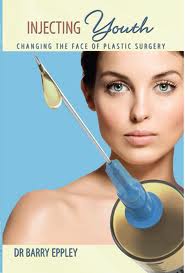Injectable fillers have an invaluable role in facial rejuvenation. Most everyone knows their use for lip augmentation and nasolabial fold reduction. These two areas are still probably their most common usage in most practices. But injectable filler use has been extended in the past few years to the broader concept of facial rejuvenation. In this approach, larger volumes/syringes of materials are used to create a facial plumping effect. Some call this a non-surgical or liquid facelift although this is more of a marketing term rather than as a substitute for what a real facelift achieves.

Thus it is important that prospective patients know the pros and cons of injectable fillers in regards to facial rejuvenation. In short, their main benefits are that they provide temporary improvement for those who are trying to postpone surgery or as an enhancement to an existing surgical result. They are not a surgical replacement. They are a surgical alternative with lesser effects but certain benefits. The decision for injectable fillers is often based on economic considerations. Patients may well recognize that fillers are temporary but they are more affordable than surgery and certainly have a faster recovery.
While I see several patients a week who present with an interest in facial fillers with the main objective of an affordable and quick fix, it is important for me to review all their options. Patients understandably are misinformed and misled by many articles that they have read in popular magazines and on the internet. By reviewing all options that are available, patients can make informed decisions. This is particularly poignant today with the advent of injectable fat grafting which serves as an intermediary treatment option between injectable fillers and surgery for some aesthetic concerns.
What can injectable fillers do that creates a facial rejuvenative effect? Besides larger lips with less wrinkles and less deep lip-cheek grooves, other uses include cheek augmentation/lifting and the treatment of hollow undereyes known as tear troughs. Additional aesthetic uses are skeletal highlighting of the brow bones, cheeks, chin and jaw angles. Do these constitute a facelift effect? Sort of but not really. A surgical facelift moves skin and deep tissues up and back, a tissue shifting and relocation effect. Injectable fillers merely push tissues outward but not really upward. For the person who is in their mid-40s with early signs of facial aging, this injectable filler effect may be very useful. For the 60 year-old that comes in with sagging jowls and a droopy neck, volumizing is not a reasonable approach.
Dr. Barry Eppley
Indianapolis, Indiana


